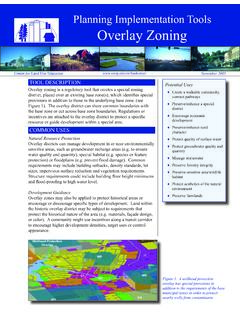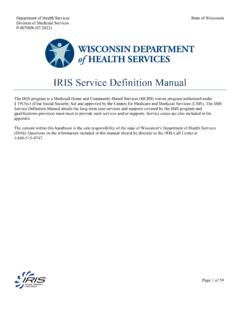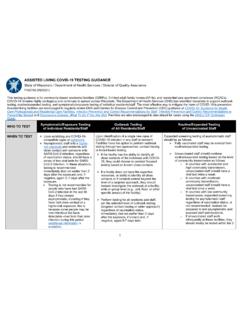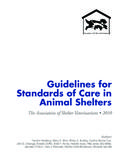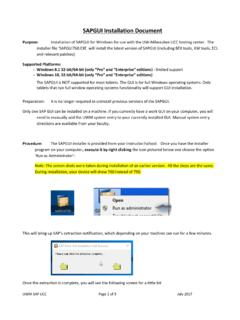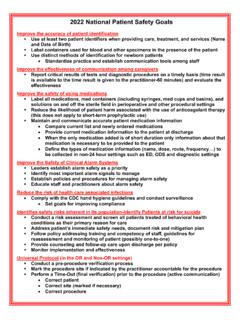Transcription of Precordial Catch Syndrome
1 This document was prepared by the staff of the UWSP University Health Service. This information should not be used in lieu of medical care. Last updated: Nov 2005 Precordial Precordial Catch Syndrome The Precordial Catch Syndrome is a very common, benign cause of chest pain in older children and young adults. In spite of its very consistent characteristics, it often leads to unnecessary and expensive testing, specialist referrals, and anxiety. Characteristics Sudden onset no warning Usually occurs at rest Localized Sharp, stabbing, or needle-like pain Often made worse by deep breathing Lasts 30 seconds to 3 minutes Goes away suddenly and completely No other symptoms No physical changes It may start as young as six years old, but more commonly happens in the late teens to early twenties.
2 It usually occurs at rest, often in a partly slouched position, such as while watching television, sitting on an old couch. It may happen during light activity, such as walking. It has no relationship to meals and never occurs during sleep. Attacks can be as often as weekly or as rare as once only. The pain is well-localized, its area being no bigger than 1 or 2 fingertips. Most commonly it is located in the front or sides of the chest. Precordial means in front of the heart. It does not radiate, or shoot to another area. It begins suddenly without provocation. Changing position may make it worse or better -- taking a deep breath usually hurts more, but can sometimes fix the problem.
3 Most people just breathe shallowly for the few seconds or minutes until it disappears spontaneously. It may last as long as 30 minutes , but this is rare. Other than appearing to be in pain, the affected person doesn t have symptoms such as paleness, flushing (red face), or wheezing, but he/she may get light-headed from prolonged shallow breathing. The pulse rate and rhythm are normal. What Causes It? First of all, it isn t imaginary; it is a real, hurting pain. And what doesn t cause it is heart or lung disease, although occasionally it occurs in patients with congenital heart abnormalities. The pain probably comes from nerves in the inner lining of the chest cavity called the pleura which becomes pinched or irritated.
4 In some, it may originate in the chest wall ribs or cartilage. But it most certainly does not come from the heart, the lining over the heart (pericardium), or the lungs. How do I Know It s Not Something Serious? Your health care practitioner should take a careful history of your symptoms and be alert to the possibility of other problems. Viral and other infections, congenital heart valve deformities, inflamed esophagus or stomach may cause similar symptoms, but will be associated with other findings, such as fever, cough, relationship to certain foods or activity, etc. The practitioner should physically check your chest by observing, feeling for tenderness, and listening to your heart and lungs.
5 Are tests needed? Further testing is only needed if the practitioner thinks there may be something else going on. For example, if a heart murmur or other abnormal sound is heard, an echocardiogram (ultrasound images), and/or chest X-ray may be ordered. What Can I Do About It? Relax, knowing that the pain is completely harmless and needs no specific treatment. Most people with Precordial Catch Syndrome outgrow it by their early to mid twenties. Attacks of pain usually diminish with age. Some have found that taking a deep breath makes it go away, but may do so at the cost of a sharper brief stab. Most prefer to breathe shallowly until it goes away.
6 Improving your sitting posture and taking an occasional deep breath is likely to help prevent it. See your practitioner if the pain changes or new symptoms develop. Thanks to: Miller and Texidor, 1955 JAMA 159 Sparrow and Bird (yes!), 1978 NZMJ 88 C. H. Gumbiner, 2003 SMJ 96
